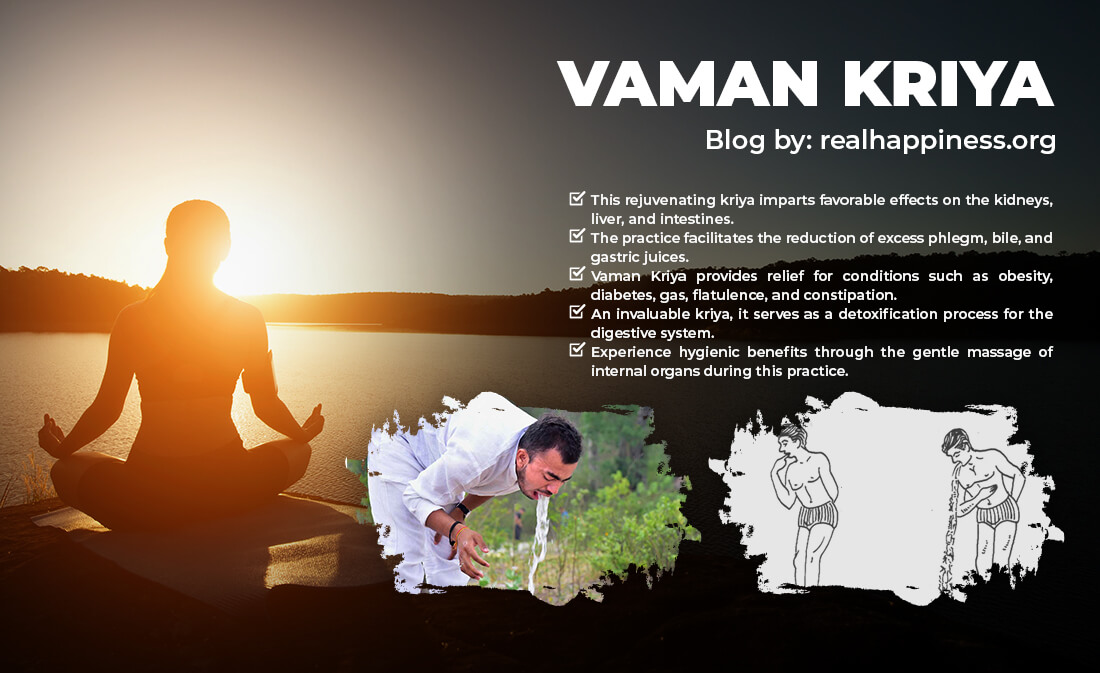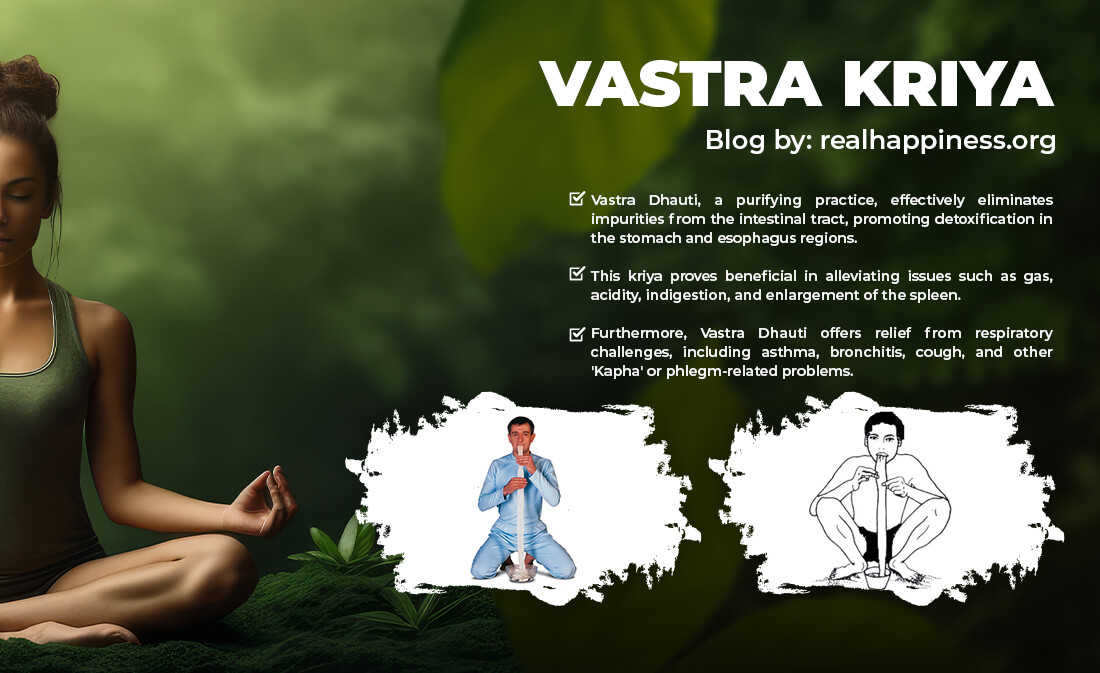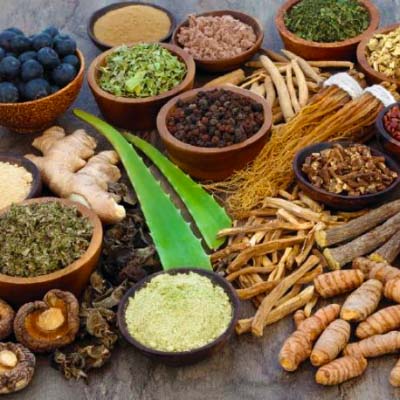SHATKARMA TYPES
How many Satkarma are there?
There are 6 types of Shatkarmas as already mentioned in the shloka.
- Dhauti (धौती)
- Basti (बस्ती)
- Neti (नेति)
- Nauli (नौलि)
- Trataka (त्राटक)
- Kapalbhati (कपालभाति)
-
DHAUTI
Dhauti is a cleansing process of the Digestive Tract. It works to purify the oesophagus, mouth, stomach, intestines and rectum along with the throat. There are basically 11 different types of Dhauti to clean different parts of the intestine. Among these, the two most common methods are -

Vamana Dhauti -
With this, one can get rid of the problem of acidity and Kapha Dosha. To perform Vamana Dhauti, mix lemon and rock salt in about 2 litres of warm water. Drink water while being in a sitting posture. After drinking, stand up and put the index finger and middle fingers of the right hand in the throat and take out the water from the stomach. It is also known as Kunjal Kriya.

Vastra Dhauti -
Dhauti means to wash and clean. By doing Vastra Dhauti, helps maintain a healthy digestive system. Along with balancing Pitta and Kapha, it normalizes the body completely. In this process, a 21 feet long dhoti i.e. 1-2 inches width of the cloth is used. Soak it in water for half an hour before doing it. After this, twist it a little further and put it inside the mouth. After that take it out comfortably.
The digestive system of the body is strengthened by Dhauti Kriya. The alimentary canal is cleaned and diseases related to the digestive system such as constipation, indigestion, and acidity are eliminated.
-
BASTI
Basti is a technique that tones and washes the large intestine. It treats many abdominal diseases. In Basti Shatkarm, a practitioner is advised to sit in a pool filled with water. After which, with the help of "Uddiyana Bandha", he/she tries to draw water into the rectum and when the action is over, the water is expelled.
Basti Kriya strengthens our excretory system. This cleanses our large intestine. Due to this, constipation, piles, fistula, spleen, gastritis and other ailments caused by imbalances in Vata, Pitta, and Kapha doshas.
-
NETI
Neti is a process that cleanses and purifies the nasal passages. It helps in reducing the risk of sinus and cures cold, allergies, fever, and so. Neti is done in 4 ways, out of which the 2 most common ways are -

Jal Neti -
"Jal" means "Water" and "Neti" means "Nasal". So this is nasal cleansing with water. Here we used special nets pot which can be made of plastic, pottery, brass, or another metal that does not have a contaminating effect on the water. The pot comes with a spout and nozzle which should fit comfortably inside one’s nostril and not leak outing water.
If one doesn’t want to invest in a special pot then a teapot may be used as long as the nozzle tip isn’t too large or sharp.
Fill the Neti pot with lukewarm water and add about 1/2 tsp of salt to it. Stir to make sure that the salt dissolves. A good guide to proportion would be one teaspoonful per half a litre of water. Salt makes sure the osmotic pressure of the water is equal to that of the body fluids, thereby minimizing any irritation to the mucous membrane. If one feels a burning sensation in the nose or the forehead, this probably means that you have added too much or too little salt.
This step helps to drain trapped water from the sinus cavities. Avoid blowing your nose too hard as the remaining water may be pushed through the ears. Clean the nose and repeat from the other side.
Jal Neti may be practiced daily, once or twice a week, or as required. The practice should take a maximum of 5-10 minutes.
After you complete both nostrils, sit in simple sukhasana, inhale deeply and bend forward while exhaling. Place your hands on the ground behind you and stay in this position for some time. This allows any excess water of mucus to flow out and can also be blown out.
Jal Neti should ideally be practiced in the mornings before asanas and pranayama practice. If necessary, it can be performed anytime, except after meals.
Sutra Neti -
This practice involves taking a length of cotton thread through the nose. Traditionally a specially prepared cotton thread called sutra was used. Several strands were tightly wrapped together and dipped in melted beeswax. However, nowadays, we prefer to use a thin, rubber catheter. Hence it is called Rubber Neti. The size of the catheter depends on the individual nasal passage. Dip the rubber into lukewarm water first for a few minutes then sterilize it. Lubricate it with melted ghee, butter, edible oil, or one’s own saliva so that it slides easily through the nasal passage.
One can perform this immediately after performing Jal Neti, before going into the Sukhasana position. Blow air through your nose onto the back of your hand in order to feel which nostril may be more open depending on which lets out more air. Start with this nostril
Make sure to breathe from the mouth only. The practice may take about 10 minutes with 5 minutes for each nostril. It can be performed twice a week. Make sure not to use force at all as the internal parts of the nose are very delicate and we must avoid damaging it.
-

NAULI
Nauli is a method that massages and strengthens the abdominal organs. It is considered a difficult exercise, which can only be learned with perseverance and patience. The practice of this kriya strengthens the abdominal muscles. it is an essential action for the purification and toning of the stomach and its internal organs. This is a self-administered abdominal massage, in which you have to stand at 45 degrees with your hands on your knees. Later the abdominal muscle is rotated.
Nauli is very useful for diseases related to the abdomen (stomach). With its regular practice, diseases like arthritis, irregularity of appetite and dyspepsia are cured.
-

TRATAKA
Trataka Kriya is an amazing eye exercise. It improves eyesight, increases focus, and is useful in mental concentration. Trataka Kriya involves concentrating one's attention on the flame of the candle, which results in the cleaning of the eyes and increased concentration. It further increases blood circulation in the eyes.
The muscles of our eyes are strengthened by the practice of Trataka, due to which the diseases of our eyes are cured. Along with this, our tantric system is also balanced. Apart from this, we also get physical, mental and spiritual benefits from Trataka.
-

KAPALBHATI
Kapalbhati is a breathing technique for purifying the frontal region of the Brain. Kapalbhati is a breathing exercise in which the breath is forcefully drawn into the abdomen and then exhaled after some time. By doing this action 10 - 20 times, the respiratory system becomes strong.
When you perform Kapalbhati Kriya, 80% of the toxic elements from your body are removed with exhalation. With the continuous practice of Kapalbhati, helps detoxify the entire body. It is the most beneficial type of Shatkarma Cleansing Technique for the brain and memory power.
Kapalbhati Kriya is very beneficial for brain-related diseases. This purifies our respiratory system. By increasing the efficiency of the lungs, the blood is purified. Apart from this, it is also very useful for those whose memory is weak.
SHATKARMA IN HATHA YOGIC PRADIPIKA
Hatha Yoga Pradipika is written by Yogi Svatmarama. It guides an individual to the mystic world of Hatha Yoga. It also mentions the kriyas (types), processes and importance of Shatkarma. Some shlokas describing the importance of Shatkarma are as follows -
Meaning:कर्म षटकमिदं गोप्यं घटशोधनकारकम्।
विचित्रगुणसंधायि पूज्यते योगिपुंगवैः।।
One can successfully get rid of the internal toxins only after the purification of the body. It is also said to be an important step before Pranayama as if Nadis get filled with toxins, then it is not possible to practice Sadhana.
Meaning:मलाकुलासुनाडीषु मारुतो नैव मध्यगः।
कथं स्यादुन्मनीभावः कार्यसिद्धिकथ्थं भवेत्।।
Once the Nadis are purified, the yogi becomes capable of practicing Pranayama effectively.
Meaning:धौतिर्बस्तिस्तथा नेतिस्त्राटकं नौलिकं तथा।
कपालभातिश्चैतानि षटकर्माणि प्रचक्षते।।
Dhauti, Basti, Neti, Trataka, Nauli and Kapalbhati are the six actions by which the body is purified.
Can we do Shatkarma watching videos online?
Side Effects of Shatkarma
The word Shatkarma comes from the word "Shat" which means 6 and "Karma" means actions. Shatkarma or Shatkriya is an ancient Indian purification technique that helps humans clean the inner organs without harmful chemicals using warm or normal water. Shatkarma should not be done by watching videos or online classes, at least the very first time, you need it to be mastered by a genuine trainer. Neither the water is in your control and nor the inner organs can be seen by your eyes, how can you imagine if you are purifying the inner organs actually or making them affected by any kind of pressure, flow of water, and imbalances of acids? The wrong practice of Shatkarma may cause swelling of the inner organs, over or less flow of hormones - enzymes and acids and much more.
THINGS TO KEEP IN MIND BEFORE PRACTICING SHATKARMA
Shatkarmas are very useful in our life. Our whole body gets purified by its practice. Now the question arises that how to practice them?
Some people believe that we can practice them even by simply reading an article or a book. But doing so can be fatal for you. You can get information about them by reading any book or watching a video. Any article or lecture is enough to give you information. But doing the practical of Shatkarmas without a yoga expert or teacher can harm you.
Before practicing them, it is necessary to have knowledge of your body's abilities, tendencies, etc. Sadhak (Practitioner) should keep his/her diet pure before practicing the Shatkarmas. Any kind of Tamasic food should not be taken. Diet plays an important role in yoga practice. In case of any disease or illness, it is necessary to first consult a doctor. Only then, you can practice the Shatkarmas. The practice of Shatkarmas should not be started alone at home.
For this, you should be get trained by a yoga guru. Here you are being told only general precautions. Well, each Shatkarma has different precautions that required special attention.






